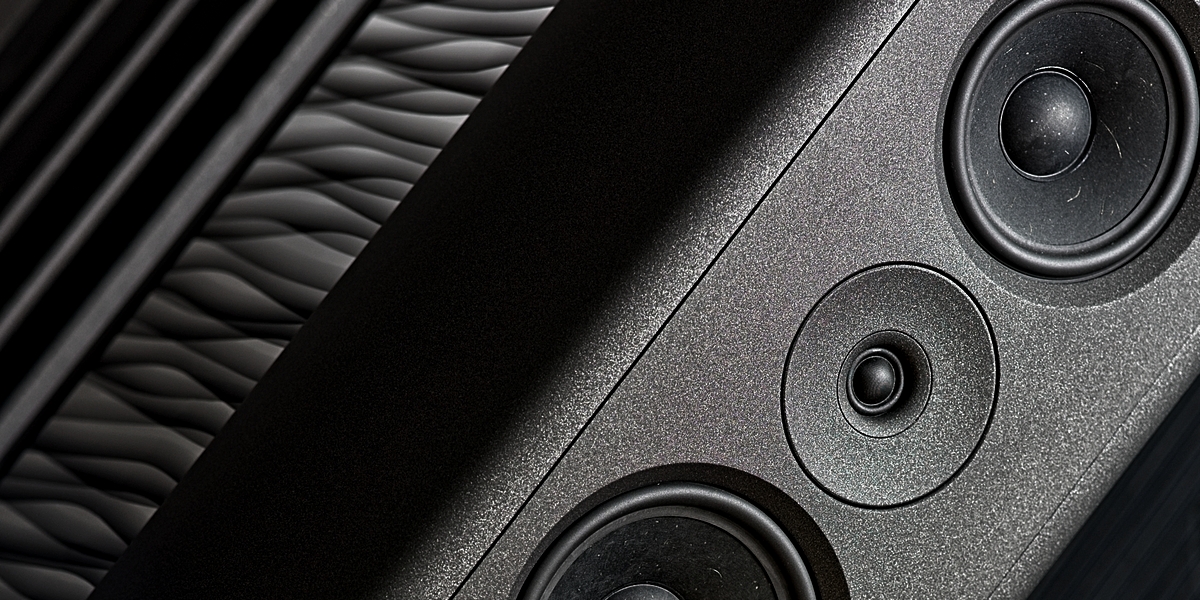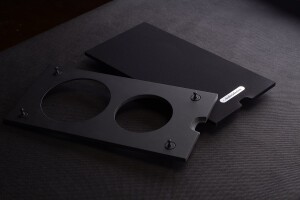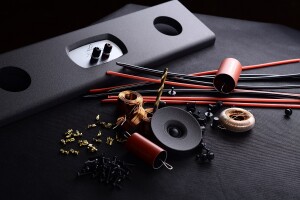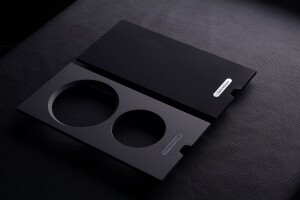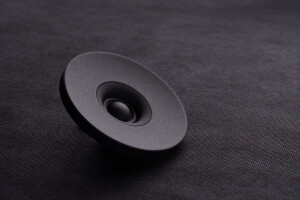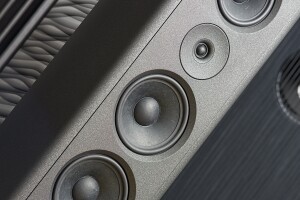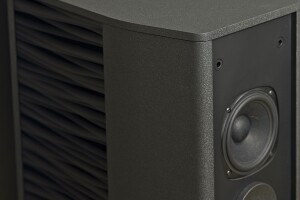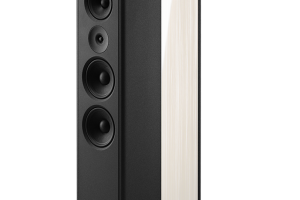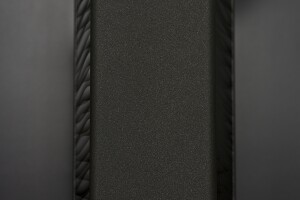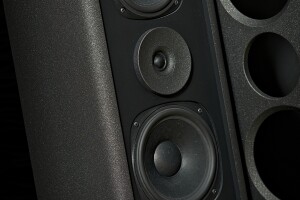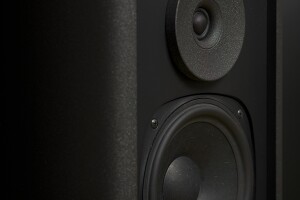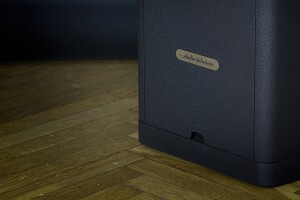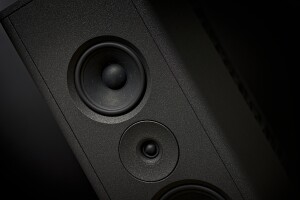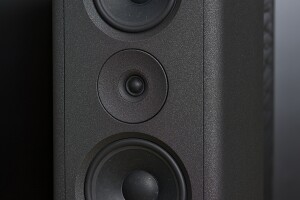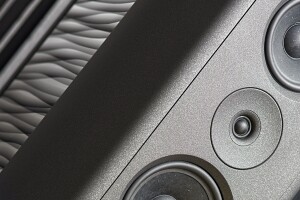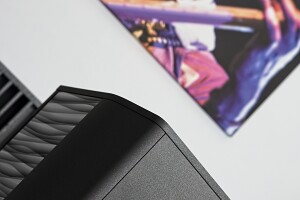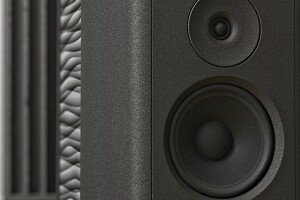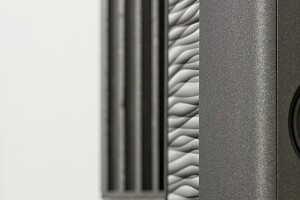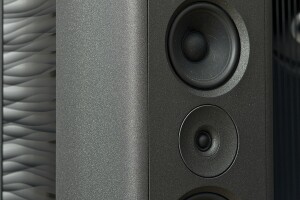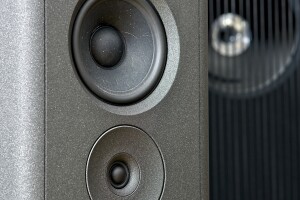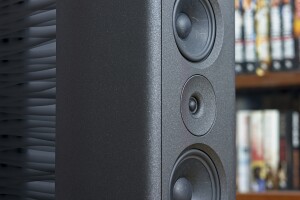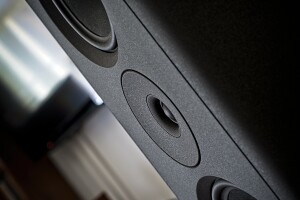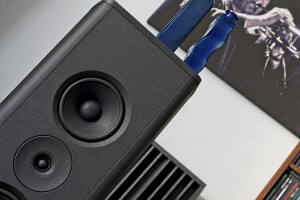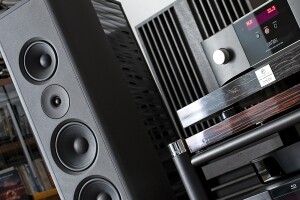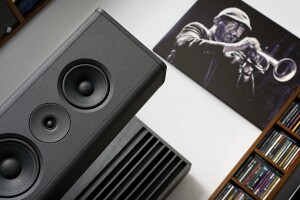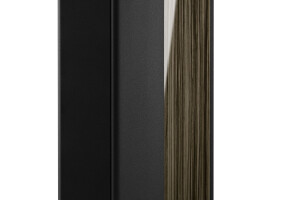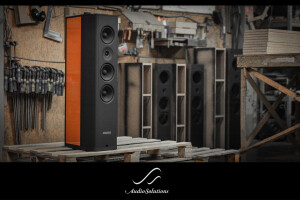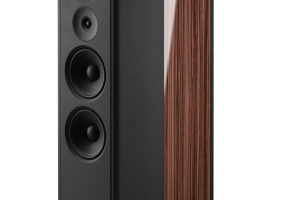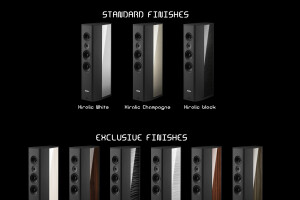Although the Lithuanian brand was founded only 9 years ago, it has already won the acclaim of music lovers and reviewers around the world. After recent chance to assess the awesome Virtuoso S this time Polish distributor delivered to me yet another interesting model for a review, the AudioSolutions Figaro M.
Introduction
I was lucky to have already several opportunities to review loudspeakers developed by Mr. Gediminas Gaidelis, the founder of the AudioSolutions and its chief designer. About five years ago I tested the Rhapsody80 model, then the smallest floor-standing model from the Figaro series, the “S” (see HERE), and in June this years the smaller of the two (as per today, because the series will be expanded) Virtuoso floorstanders, that is (also) the “S” one (see HERE). Each of these encounters was so interesting that I welcome every next opportunity to familiarize myself with other speakers from this brand, as Gediminas definitely knows his stuff. Yet, I can’t deny that it was the Virtuoso S that, in a way, were a culmination of my experiences with his products (at least so far). It’s the most expensive one among tested by me and without a doubt the very best one. Obviously having already a soft spot for the AudioSolutions loudspeakers, how could I have had refused when offered to test the Figaro M?!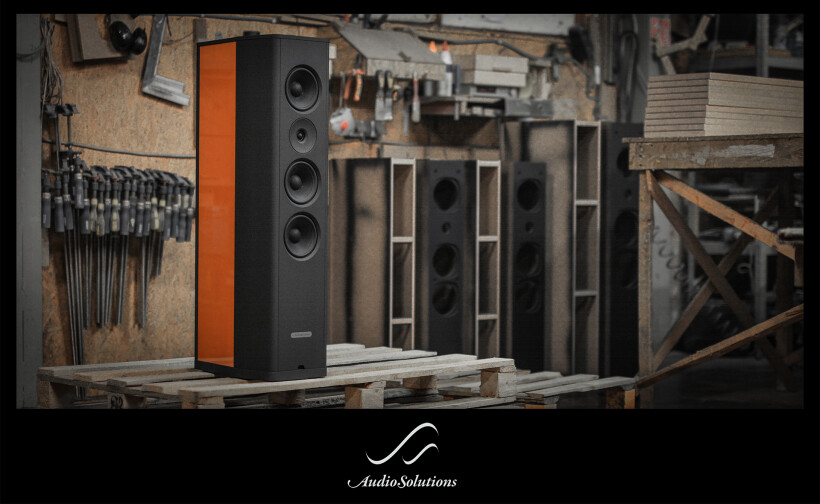
The Lithuanian company is one of the relatively few highly specialized manufacturers. It’s sole focus lays with development and production of loudspeakers. I personally highly appreciate brands that focus on what they are really good at, as it allows them to constantly broaden their specialized knowledge and gain experience that translates into ability to offer more advanced and better performing products. If you have watched the development of the AudioSolutions’ lineup, as I have, you should know by now exactly what I am talking about. The company has developed its own style, its proprietary technical solutions and gradually implements them in subsequent series. Gediminas focused on modern styling and finishes of his loudspeakers, appealing to, among others, young people, but also to fans of modern interiors. I, a rather traditionalist in this area, am more fond of wood finishes and yet already in my previous reviews I admitted that I would not mind having speakers that look like AudioSolution’s in my living room. They are made and finished perfectly, and I mean not only models from the most expensive series, but practically all of them! In addition (although there are differences between the individual series), customers can choose from many types of finishes, so choosing the perfect one for a specific interior and/or taste should not be a problem. That allows one to focus solely on the loudspeakers performance.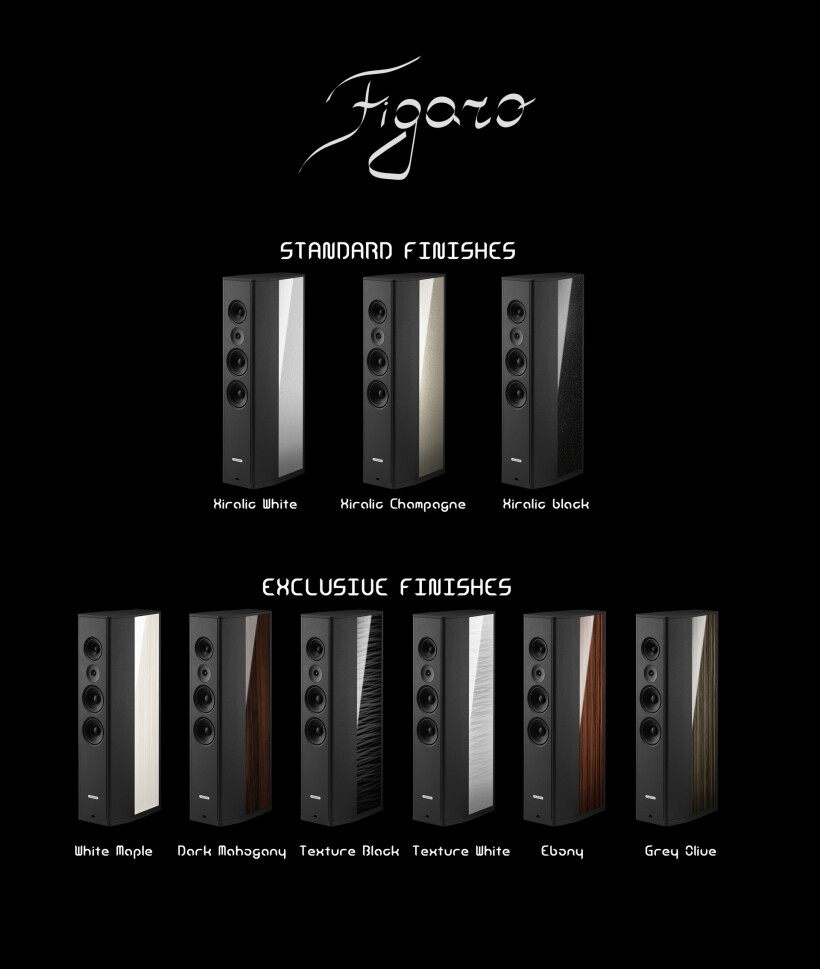
The current lineup includes four lines of loudspeakers – the entry level series called Overture (available also in wood finishes! :)), then Figaro!, Virtuoso and finally Vantage 5th Anniversary. The latter, as the name suggests, was developed on the occasion of the company’s fifth anniversary. All the knowledge and experience gained earlier were applied to it. Additionally, for this series AudioSolutions engineers developed a number of new solutions, some of which could later also be used in cheaper series of this brand. It so happened (or maybe that was the intention from the very beginning?) that the jubilee series landed at the top of the lineup. These are true high-end loudspeakers in terms of pricing, and judging by a few experiences I had with them during shows they also aspire to top-high-end when it comes to the performance. The newest, still being developed series, Virtuoso, is to be a kind of a bridge between the top loudspeakers and the slightly (because it is difficult to call them cheap) cheaper one (i.e. the Figaro!) It benefits from number of solutions introduced first in the Vantage series and it pays off as it becomes immediately clear once one has a chance to listen to them.
It’s just that, while Virtuoso cost half the price of Vantage, they are still too expensive for many music lovers. If you’re one of them you should turn your eyes (and ears!) to the Figaro! (the exclamation mark is not a mistake, but part of the original name) series, a representative of which I am about to describe for you, as these are affordable for a much wider audience. Along with the development of the lineup, Gediminas unified the nomenclature, hence now from the Figaro line upwards, models are marked with the name of the series and letters – S (small), M (medium), L (large), in the case of Figaro there is also XL (xtra large). Additionally, the Vantage and Figaro series include models marked with the letter C (center speaker) and B (used for stand-mount models), which are a proposals for people who want to build a multi-channel home theater system.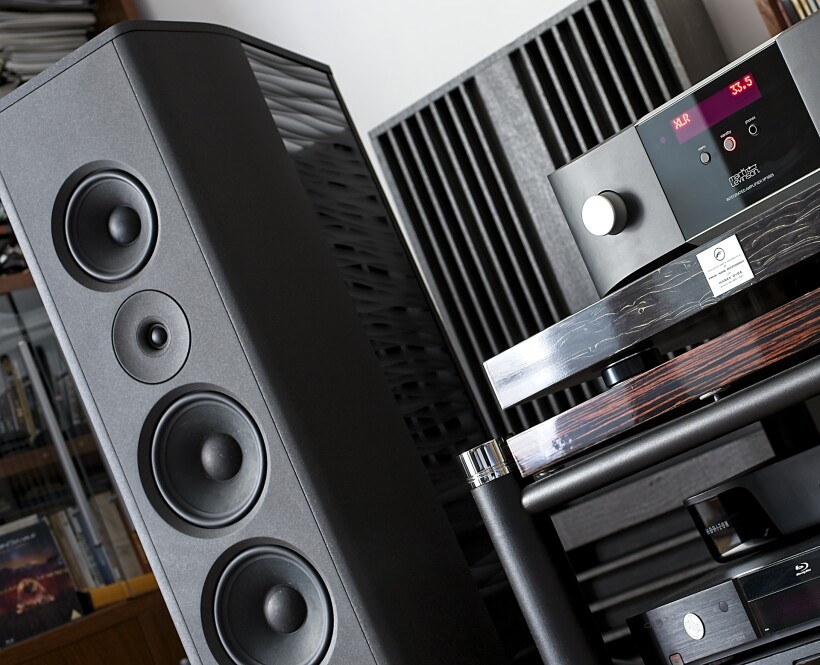
The Figaro M that I received for this test is one of as many as four floor-standing models in this line – the second from the bottom and the third from the top. Like all AudioSolutions floor-standers, it is a 3-way bass-reflex design with rear-firing b-r port. As the Lithuanian designer explained in one of the interviews, when he’d started building loudspeakers he’d preferred 2-way designs, because these require only one crossover frequency, which makes it easier to develop a model that sounds (almost) like a point source. Later, however, he changed his approach and switched to 3-way designs – the Vantage series includes even a three-way monitor – as this allows the crossover point to be set at quite a high point, beyond the frequency range the human ear is most sensitive to. This translates into a more natural, more coherent musical image, or at least that’s how we perceive it.
In the interview he gave me on the occasion of the Virtuoso review, I asked Gediminas about the use of bass-reflex design and the fact that the port was placed on the rear panel of the speaker. The very choice, as it turns out, was simply a choice of a particular concept that suited the designer best. It was never a question whether it was a better solution than others or a worse one, as they all have their advantages and disadvantages. Placing the B-R port on the rear was a well-thought-through decision that allows every user to tune (to some extent) the sound of the speakers. A front-firing bass-reflex means that speakers offers certain sound and user can do hardly anything about it. When it is firing back by changing the distance from the wall behind the speaker one may correct/tune the performance. Place speakers closer to the wall and there will be more bass, it will sound more powerful, move them further away from the wall and the bass will get faster, tighter, although usually there will be a bit less of it. So back-firing b-r means giving user options.
As Gediminas also told me at the time, the cabinet design and the B-R layout mean that these loudspeakers can be placed (if necessary) very close to the wall (he even told me about an extreme case, with Virtuoso placed just 5 cm from the wall and still performing great) without any typical issues in such arrangements. Simply put, usually when loudspeakers are placed too close to the wall, the bass just rumbles. At the same time, I should tell you that I actually ended up with Virtuoso placed 25-30cm further away (75-80cm in total) from the wall than most of the loudspeakers. Gediminas justified it with me being used to the sound of speakers featuring closed cabinets (Ubiq Audio Model One). I did move them away from the wall not because of a rumbling bass, but I tried to find a spot that would offer the right (to my ear, in my room) balance, both in terms of the entire frequency range and stereo imaging.
That was Virtuoso S. The Figaro M on the other hand stood only 50 cm from the wall behind them, because for them that was the optimal placement. In both cases, moving the loudspeakers closer to the wall to „amplify” bass performance was completely unnecessary – this is one of the advantages of both of these designs. When, after a few attempts, I found the already mentioned optimal positioning of the tested loudspeakers, all that was left to do was to find out what the Figaro M could do compared to the circa three times more expensive Virtuoso S. Let me tell you already now, that they can do … A LOT, also MUCH MORE than the price difference would indicate. Although in audio the rule of diminishing returns in nothing new.
Design & Features
Audio Solutions Figaro M is, like almost all products of this manufacturer, a 3-way ventilated design with a back-firing bass-reflex. The large cabinet (1120 x 272 x 470 mm weighting 45 kg) has a hexagonal shape. Eliminating any parallel surfaces minimizes the risk of standing waves occurring inside the housing. The manufacturer calls his cabinet design “self-locking” – individual elements are fitted together so that the connections between them tighten or “close”, hence the name. This is to create stiffer and more vibration-resistant connections. To combat the latter, another solution was applied – the use of more than one material (each with its own resonance frequency), plus elements of different thickness. The latter dimension of the baffles varies from 18 to even 50 mm (the rear panel). In fact, each baffle was designed separately so as to obtain the optimal effect in a given part of the cabinet, but also so that all the elements combined together offer the optimal final effect.
An interesting solution is the front baffle, or rather a “stealth grill” in the form of a baffle with cut outs for individual drivers. These holes have a precisely designed and machined shape, so that they do not introduce unwanted distortions to the sound. A single pair of WBT NextGen speaker terminals is mounted in the lower part of the back panel, close to the floor level. The cabinet is equipped with integrated, adjustable anti-vibration feet recessed to the bottom of the speaker. Most of the Figaro M cabinet is finished with a special matte varnish with an addition of silver particles. Only the side baffles, or rather a part of them, are finished with other varnishes (one of the options is the 3D one used for the reviewed pair) or natural veneers. The quality of the finish is the top shelf – these are real beauties.
In Figaro M the treble is reproduced using a 25 mm soft silk dome, which is placed in a small waveguide. The designer justifies its use by explaining that it improves the directional characteristics of tweeter. Above the latter there is a 152mm midrange driver with an extra rigid cellulose diaphragm. According to the designer’s philosophy, the crossover point (between the midrange and treble) was placed high up the range – at 4 kHz. In this way, it bypasses the frequency range which the human ear is most sensitive to, making the sound more coherent. Below the tweeter, there are two bass woofers, each 182 mm in diameter, each also with an extra rigid diaphragm, which support the frequency range up to 400 Hz. The crossovers are mounted on a PCB with thick paths. They feature high-class components, including Jentzen capacitors, thick wire wound coils flooded with resin (for purpose of vibration damping), and for bass woofers, also toroidal coils. The crossovers for a given set of speakers are paired.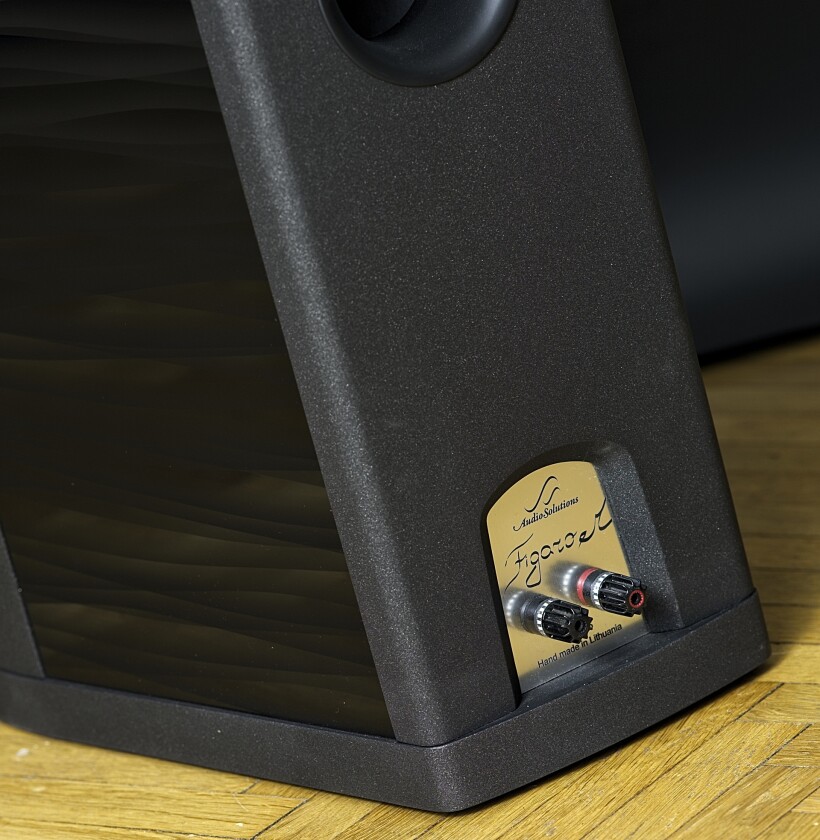
Sound
I mentioned it in my previous reviews, and the Figaro M only confirmed my opinion again. Namely, the speakers designed by Gediminas like to play: a) acoustic music, with particular emphasis on the classics; b) loud; c) basically everything that is thrown at them, despite what I wrote in a) and b). When it comes to volume level, it is not so much that they have to play very loud, but on every day basis just a bit louder than I am used to. So it’s not about the power of the amplifier that drives them, because they behaved in the same way with the 125W Mark Levinson 5805 and with the 350W LampizatOr Methamorphosis monoblocks, but also with the 37W Class A GrandiNote Shinai. When playing quietly (during the day, I will come back to that in a moment) ) I felt the sound didn’t fully open, the presentation wasn’t as effortless as I wished it had been. But all I had to do was to push the volume level a bit up and they immediately opened like flowers in the morning and began to radiate enthusiasm and energy of the presented music in a way only few other speakers were able to in my room. For those who haven’t read my previous reviews of AudioSoulutions products, let me explain that it’s not that the Figaro M sound poorly at low volume levels – they sound very good, and when listening to them in the evening, when the ambient noise clearly drops, they sound great even at whisper level! It’s just that when one allows to them to play just a bit louder they simply perform noticeably better better. I felt like we both, the Figaro M and me, highly enjoyed the moment when I pushed the volume up. The fun factor for me, particularly when listening to genres such as rock, blues, and so on, was incredibly high and the Figaro seemed to be enjoying the flow, momentum and effortlessness of the presentation while at the same time keeping a full control over every of its aspects (obviously, the amplifier played a big role in that).
I also had a few evening auditions with them, which were inevitably quiet but equally enjoyable (due to the already mentioned much lower background noise level). However, when I plugged them in for the first time, bit sore and sweaty after taking them out of the boxes (over 40 kg each and packed in such a way that it is not easy to get them out if you don’t have help), I connected them to the Levinson 5805, which I was just finishing reviewing and … somehow I did not feel too enthusiastic about this setup even though the amplifier had performed very well with my speakers before. Usually lack of a big “wow!” from the very first minutes of listening to a new product is a good sign, because when a product does make a great first impression, it often turns out to be rather showy, not classy, and listening to it in a longer run often gets quite fatiguing. But the Figaro M probably played for an hour or so and I still listened to them quite indifferently – it was good, but nothing more than that. To be honest, at least subconsciously, I expected a performance that would not be that much different from the excellent Virtuoso S, which, considering the huge price difference, I admit, was not realistic. On the other hand, experience with cheaper AudioSolutions models also suggested that something was wrong, because the tested model should have perform better.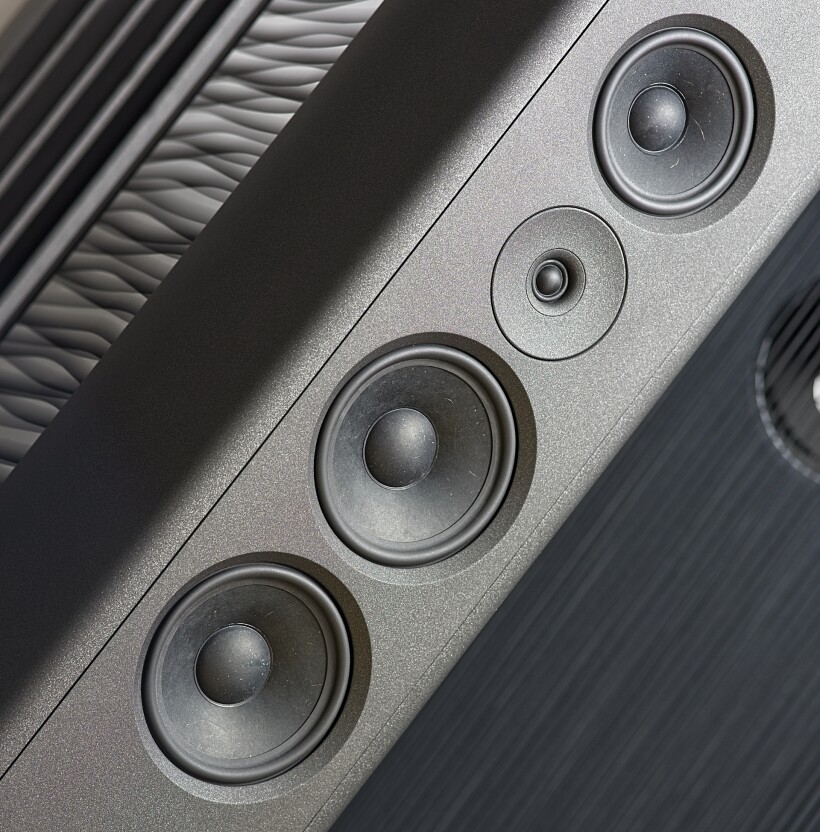
The answer came quickly – I pushed the volume level in the No 5805 by 10, then even 15 dB up, and the Lithuanian speakers transformed almost beyond recognition. The difference was downright dramatic, and obviously positive. It happened to be a piece (I don’t even remember which one) by Mozart (one of the masterpieces released by the 2L record label as a hi-res file). The sound opened up amazingly, filled with air, there finally was this ease, momentum, energy, but also drama and a large, huge space that opened up in front of me, that I remembered from other AudioSolutions products performances. And the speakers completely disappeared from the room. The latter means that the sound was detached from the speakers, that I could hear it coming not from them, but rather from the space between and beyond. This is one of the features that I particularly value in loudspeakers, offered primarily by stand-mount speakers, and not as often by floor-standing ones.
Levinson, that was still driving AudioSolutions at this stage, is a highly dynamic, energetic and tonally quite neutral amplifier. For my taste, it could use a bit more richness and smoothness, especially in the midrange area, which the (twice as expensive) Boulder 866 had delighted me with just few weeks earlier. Nevertheless, such a neutral, powerful performance in combination with the Figaro M turned out to yield excellent sonic results. And, as I mentioned at the very beginning, it worked out especially well with the classical and acoustic music. Quality releases of these musical genres do not need to be „warmed up” or „enriched” by the audio setup that plays them. All it has to do it to convey exactly what is recorded on the tape (or in a file). And that’s what the AudioSolutions speakers, all models I listened to so far, regardless of the price level, are really good or even excel at. If the amplifier presents the reproduced content in a similar way (with signal deliver by a high-class source), the Figaro M will deliver it very accurately.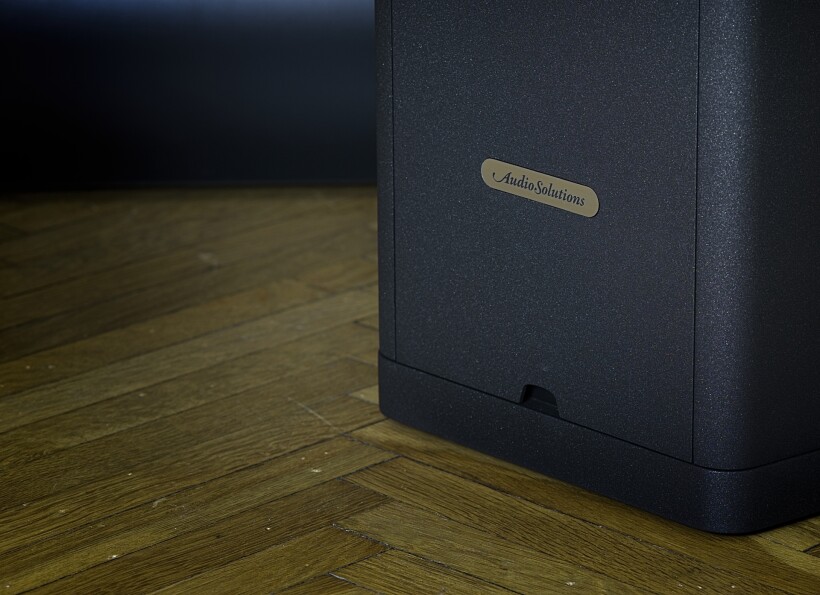
After all, high fidelity (towards played recordings) is enough to hear the richness and complexity of the orchestra’s sound, its momentum and even scale. Although I have to day that the Virtuoso S or my Ubiq Model One Duelund Edition presented the latter aspect in an even better way due to their larger dimensions. Beautiful, extremely clear and expressive sounded, for example, the performance of Anna-Sophie Mutter, who joined John Williams to play a number of movie themes he wrote. The Figaro M effortlessly presented the soloist against the background of the orchestra, although the latter, when needed, presented its full power without overwhelming Anna-Sophie’s performance. Still, it was the exceptionally convincing timbre of the violin, its lightness, the multitude of clearly presented information, plus the impeccable technique of the artist resulting in a beautiful fluency of her playing, that attracted attention in the first place.
The Lithuanian loudspeakers, which has already been mentioned above, but is worth emphasizing, can build a huge soundstage, in true three dimensions. The dimension that is rarely mentioned, because it is rarely properly recorded, and then re-played, is the height. The Figaro M not only are able to disappear from the room, extend the soundstage far beyond the space between speakers, and render incredible depth, but also differentiate instruments/sounds in a vertical plane very well. And this is a really unique feature. So they were able to reproduce the enormity of the interior of the church, where Arne Domnerus recorded the “Antiphone blues”, or the courtyard of the Noirlac Abbey, where Michel Godard performed his variations on Monteverdi’s music (“Trace of Grace”). In the former, the saxophone delighted me with its timbre and texture, and the organ with their low, deep, powerful murmurs – both instruments rendered in a very convincing, real way. This, combined with the gigantic space that I “saw” thanks to the Figaro M’s presentation, with the organs placed way above the saxophone, created a unique, very realistic atmosphere of a concert taking place in a huge church.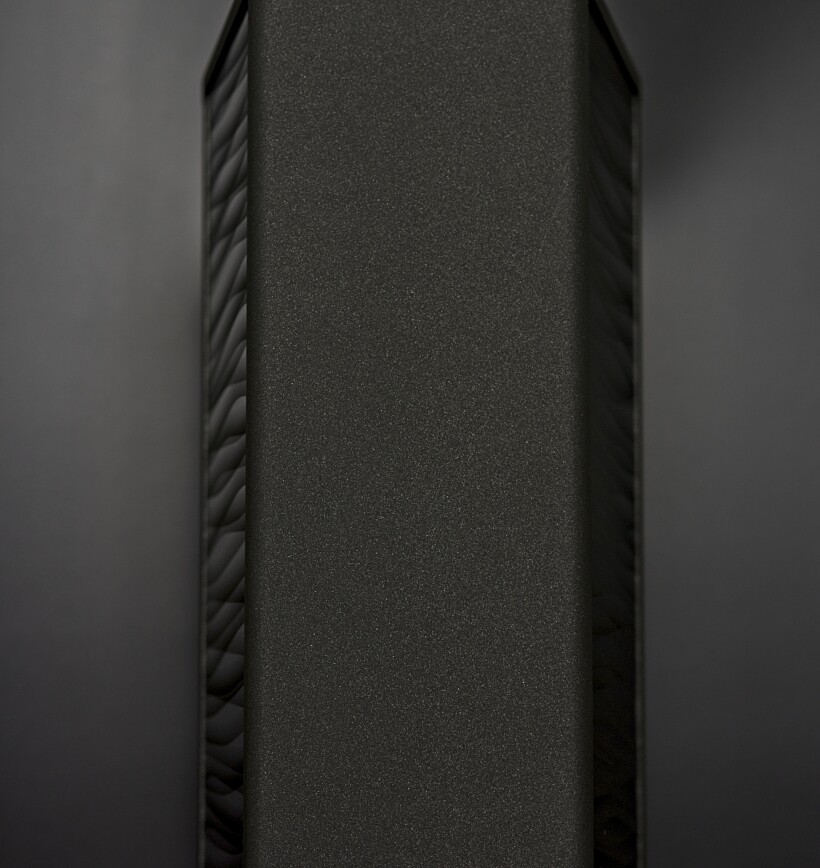
Godard’s album, in turn, is an equally unusual marriage of instruments – a jazz trio joined forces with a baroque one, and vocals by Guillemette Laurens and the amazing Gavino Murgia. The result is absolutely mesmerizing, provided, of course, that the setup that reproduces this album is good enough to convey its all aspects properly. The Figaro M turned out to be an excellent executor of the capabilities of my system driving them, rendering a spectacular musical performance using both, the space and fantastically captured timbre of instruments and voices. The AudioSolutions showed their ability to precisely locate phantom images, as well as a series of sound reverbs spreading throughout the Abbey’s walls. I liked the rendering of this disc even more only with a handful of the top tube amplifiers fed with a signal from a vinyl record. In a word, the Figaro M joined quite an exclusive group of remarkable performers in my private ranking particularly when it comes to live recordings captures in unique venues.
Listening to acoustic recordings, such as the Bobo Stenson Trio’s, once again confirmed that the Figaro M do not try to add anything to the music they play, but only to reproduce the signal that is delivered to them as faithfully, as accurately as possible. That is why the Stenson’s piano delighted with its delicate, smooth sound, only to accelerate, sound more vigorously a moment later and ultimately hit me with its full power and depth to leave me with goose bumps on my arms. Anders Jormin’s bass was shown in a similarly impressive and convincing way. It gently played in the background only to jump out from the background from time to time to prove how powerful, deep and colorful it can sound like. The Figaro M followed each instrument effortlessly, showing flawlessly both, the quick attack, quite a long decay, beautiful timbre, even the biggest shifts in dynamics and a ton of low level details, this recording is so rich with. The performances of New Orleans musicians playing trumpets, trombones and other brass instruments sounded as impressive, though not showy (!). The Lithuanian loudspeakers perfectly combined speed, sonority and ability to balance on the line between highly realistic but natural and too bright/ too harsh sound of these instruments, never crossing this line. And because they truly „felt” New Orleans’ rhythms, I was completely drawn into the world of music performed by Louis Armstrong, Wycliffe Jordan, Kermit Ruffins and others.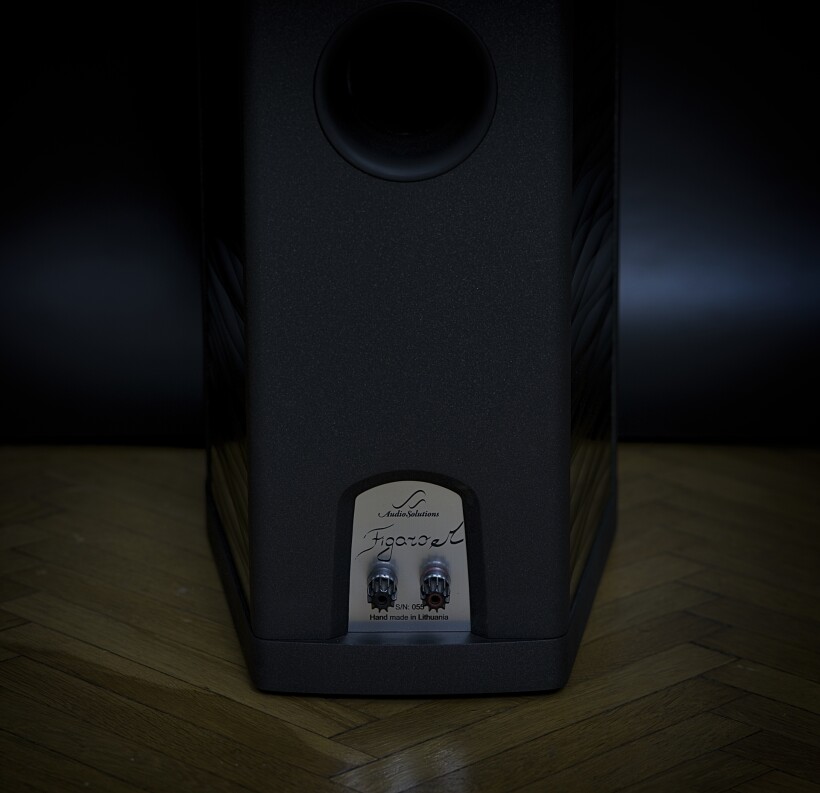
Although I’ve emphasized it every now and then that the Figaro M are perfect loudspeakers for acoustic and classical music, it does not mean that electric genres sound bad or even not as good. I am always more impressed by audio components that can play unplugged music convincingly rendering the timbre and texture of acoustic instruments and vocals, because it is harder to achieve, and easier to verify, so to speak. In this case, playing an album of our young, but very talented bassist, Kinga Głyk called “Feelings”, proved to me from the very first piece that the reviewed speakers are fully capable to rock electric music equally well, as acoustic one. The bass was fast, tight, really deep and heavy when needed. Also drums, with kick drum in particular, and on this and the next album (Steve Gadd / Chuck Mangione “Together forever”) sounded really powerful, but were also properly fast and taut. Importantly, the sound was „low” both in terms of how well extended it was, but also in where it was placed on a vertical plane of the soundstage. I will come back to the soundstage later, but I wanted to indicated it already that these speakers are capable of delivering a truly three-dimensional rendition of everything that is going on on the stage.
If you know me you realize that after hearing how impressive and convincing Kinga’s performance was I simply had to add some Marcus Miller and Stanley Clarke albums to the playlist. I had a chance to see both of them live (more than once) and I consider both of them absolute giants of bass. The Figaro M, as very few other speakers in my system (and most of them costing much more – e.g. my Ubiqs, Hansen Audio Prince V2, Marten Mingus Quintet, also Virtuoso S, to name some) were able to generate (as far as possible in home environment) this extraordinary level of living, breathing energy that both these masters of trade convey during concerts. And on top of that, the AudioSolutions did it with absolute control over every aspect of the sound. The pace and rhythm – perfect, the lowest sounds – heavy, bursting with energy, but tight, clean, well-differentiated and, although these are not so big speakers, and – that’s very important !!! – although there is no „boomy” or „rumbling” effect coming from their bass reflex ports, the bass goes very, very low, it get visceral when needed. The manufacturer declares frequency range (in a room) starting from 32 Hz and probably (I did not measure it) that’s a real number, not exaggerated one, like it with some (or even many) competitors is.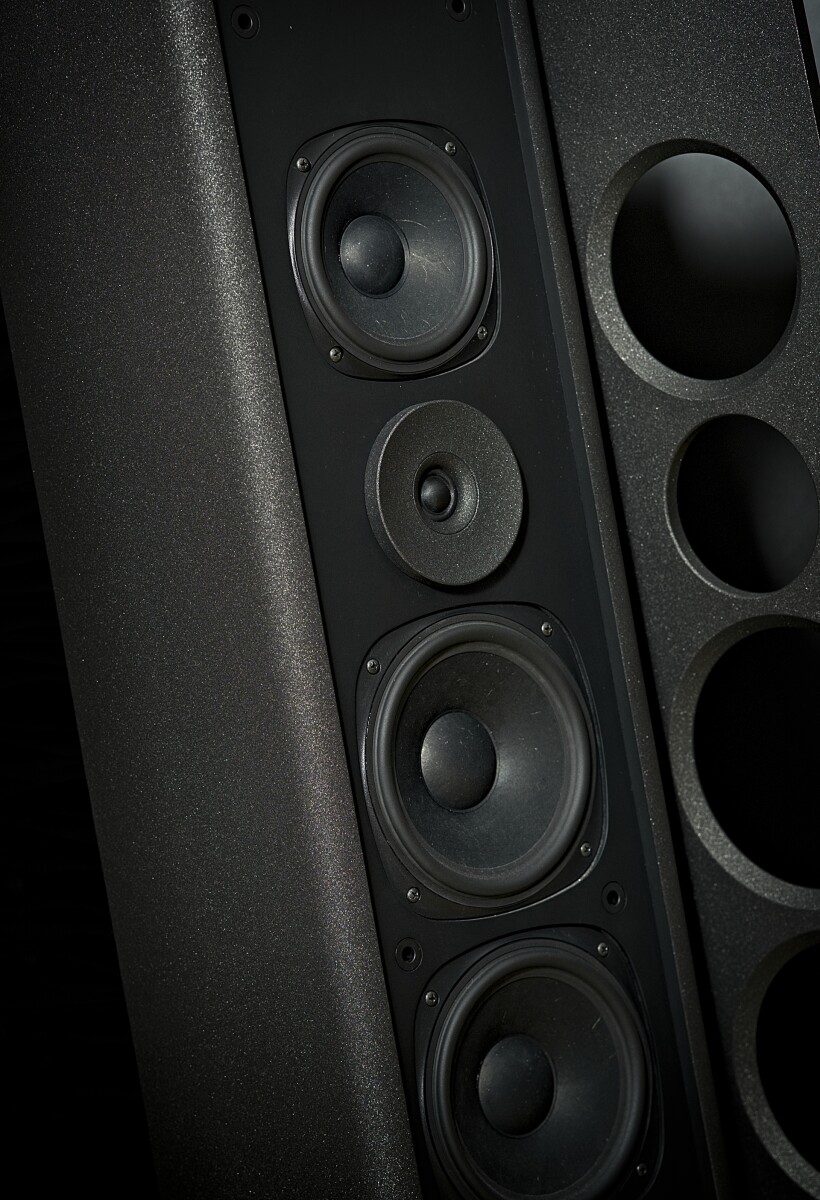
Literally for the last two hours of listening to the Figaro M, the day before they were picked up by the distributor, I connected them to an amplifier that was waiting for its turn to be reviewed. Those who read my Virtuoso S review may remember that I described an experiment I performed using an 8-watt 300B SET to drive them. This setup delivered a wonderful treble and midrange, it was only the bass area that the Feliks-Audio Arioso 300B was not quite able to properly drive/control. So I’d regretted not having a more powerful tube amplifier at my disposal at the time. This time I had one at hand, though not a SET, but a Japanese Push-Pull, namely the Leben CS-600X offering a 30W output per channel. The Japanese amp filled in the midrange beautifully, added a touch of this ethereal feeling to the treble, and still handled the bass very well. Not perfectly – powerful transistors are capable of a better control and definition of low tones, but with the Leben it was good, no reasons for complaints. The bass was a bit more tube-like, i.e. with a slightly rounded attack, more fleshy, especially at the bottom of the band, but also more colorful, richer. Where a tight, “stiff”, fast electric bass was in play, the Leben was somewhat inferior compared to solid-state competitors, but when it came to an acoustic bass, it sounded definitely better and more natural in most cases. In a word – combining these speakers with a tube amplifier is a valid option, and the results can be more than good, truly satisfying, but it seems that at least 30 W output per channel will be needed for that and even more can came handy.
Summary
Does Figaro M match the class of Virtuso S sound? Of course it does not. The latter is almost three times more expensive. Is the difference in the performance between them adequate to the price gap? It also isn’t. It never is in audio. I don’t like to quantify performance differences so I won’t do that for the Figaro M and Virtuoso S. But to give you an idea let me say that the former offer surprisingly large chunk of the capabilities of the latter. They can play any music in an effortless, pure, transparent, dynamic and precise way. They combine these advantages with high musicality, fluidity and spaciousness of sound. They deliver an energetic, powerful performance when needed, but they will also do justice to sophisticated, delicate acoustic recordings, delighting with their resolution and faithful timbre reproduction. They are not afraid of presenting a large orchestra – they are able to (as far as possible in home environment, of course) convey its scale, momentum and power in a well organized, convincing, even visceral way. The music is rendered on a large stage, „detached” from the speakers, with all three dimensions clearly marked, which is not that common. The Figaro M love every piece of music with a strong rhythm, which (assuming they are driven by an amplifier of the appropriate class and with enough output) is extremely punctual. You prefer a slightly more colorful, richer, smoother way of presenting music? No problem – all you need is a good, tube amplifier capable of delivering 30W, preferably even more, that will put the Figaro M’s relatively high efficiency to proper use. They will then show a slightly different, gentler, warmer, but still equally immersive, high enjoyable side. These are excellent sounding and great looking loudspeakers belonging to the high end world and yet not that crazy expensive. Give them a chance and you won’t regret it!
Features & Specifications (according to the manufacturer):
- Dimensions (HxWxD): 1120 mm x 272 mm x 470 mm
- Weight: 41 kg a piece
- Sensitivity: 91,5 dB @ 2,83 V 1m
- Nominal power handling: 140 W rms
- Impedance: 4 Ohm
- Crossover frequencies: 400 Hz; 4000 Hz
- Frequency range (in a room): 32-25000 Hz
- Drivers: 2,5cm silk dome tweeter, 15.2cm ER paper cone mid, two 18.3cm ER paper cone bass drivers
Price (when reviewed):
- AudioSolutions Figaro M: 5.700 EUR
Manufacturer: AUDIOSOLUTIONS
Associated equipment:
- Analogue front end: J.Sikora Standard MAX turntable, J.Sikora KV12 tonearm, AirTight PC-3, phonostages: Grandinote Celio mk IV, ESE Lab Nibiru V 5.
- Digital source: a passive, custom PC with WIN10, Roon, Fidelizer Pro 7.10, JCat USB Femto card with iFi power supply, Hdplex linear power supply for PC, JCAT USB Isolator
- D/A Converter: LampizatOr Pacific +Ideon Audio 3R Master Time (USB signal regenerator)
- Power amplifier: GrandiNote Shinai, LampizatOr Metamorphosis, Art Audio Symphony II (modified)
- Preamplifier: Audia Flight FLS1
- Loudspeakers: GrandiNote MACH4, Ubiq Audio Model ONE Duelund Edition.
- Interconnects: Hijiri Million, Hijiri HCI-20, TelluriumQ Ultra Black, KBL Sound Zodiac XLR, TelluriumQ Silver Diamond USB
- Speaker cables: LessLoss Anchorwave
- Power cables: LessLoss DFPC Signature, Gigawatt LC-3
- Power: Gigawatt PF-2 MK2 and Gigawatt PC-3 SE Evo+; a custom power line with Gigawatt LC-Y in-wall cable; Gigawatt G-044 Schuko and Furutech FT-SWS-D (R)
- Racks: Base VI, Rogoz Audio 3RP3/BBS
- Anti-vibration accessories: ROGOZ-AUDIO SMO40 and CPPB16 platforms and ROGOZ AUDIO BW40MKII feet, Franc Accessories Ceramic Disc Slim Feet and Wood Block Platform


